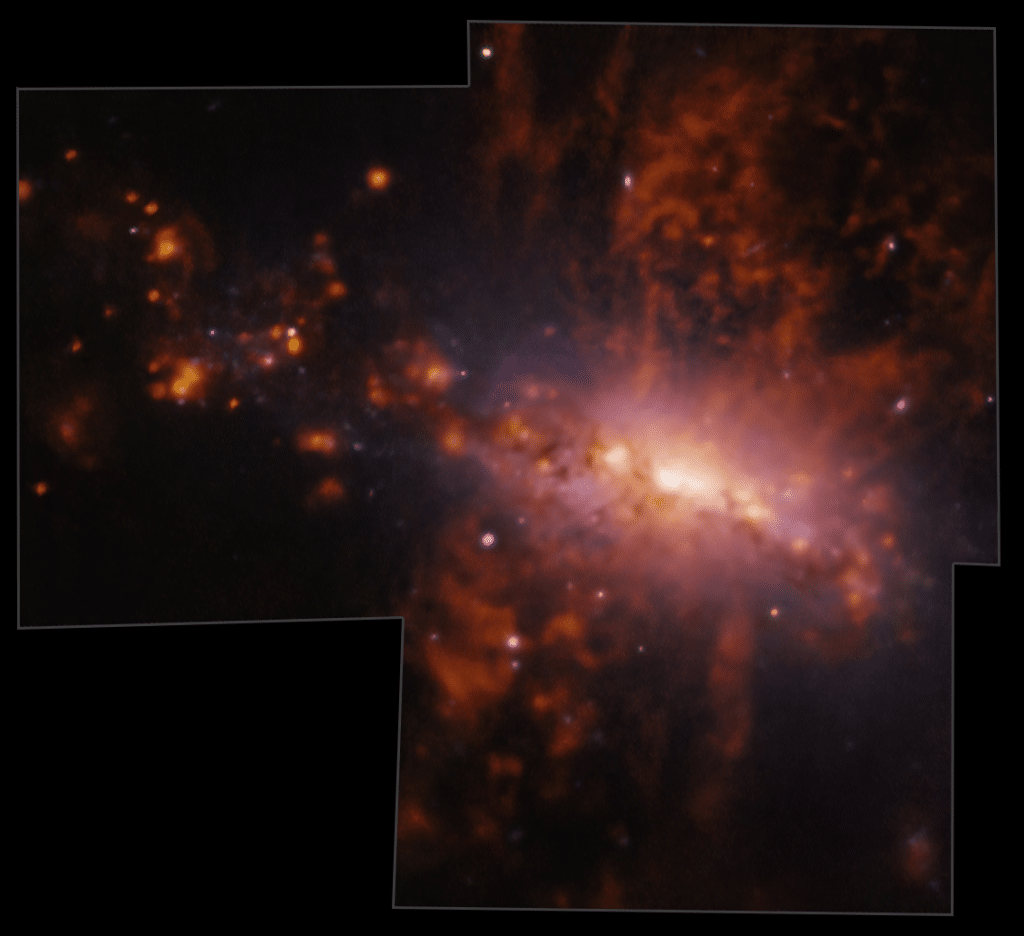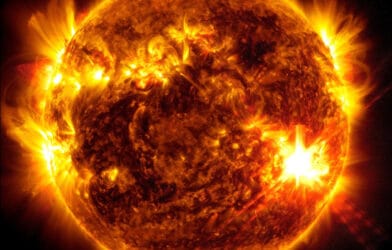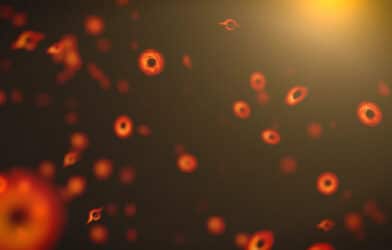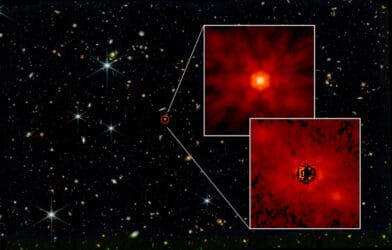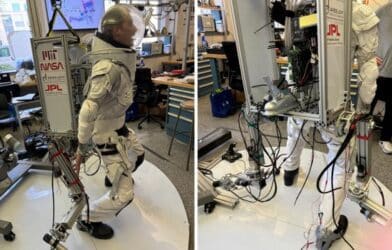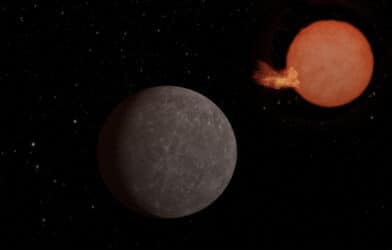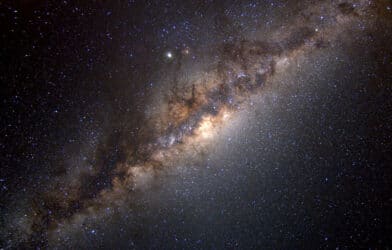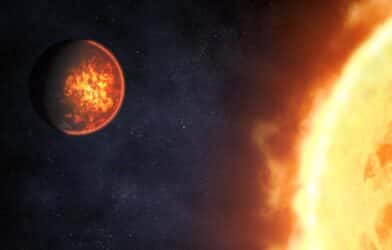High in the skies above northern Chile, the Very Large Telescope (VLT) has its sights set on NGC 4383, an unassuming galaxy in the Virgo cluster, some 55 million light-years from Earth. But as a new study published in the Monthly Notices of the Royal Astronomical Society reveals, there’s more to this cosmic wallflower than meets the eye.
Using the VLT’s powerful MUSE instrument, astronomers from the International Center for Radio Astronomy Research (ICRAR) have discovered a massive outflow of gas erupting from NGC 4383 — a galactic “chimney” pumping material into the space between galaxies. This finding, from the first results of the MUSE and ALMA Unveiling the Virgo Environment (MAUVE) survey, sheds new light on the complex lifecycle of galaxies.
At first glance, NGC 4383 appears to be a rather ordinary galaxy. Optical images show a relatively featureless stellar disc, hinting at a possible spiral structure. But recent observations have begun to reveal its quirks. A prominent dust lane cuts across the bright center, while clumps of young, hot stars dot the galaxy’s northern extremities.
The real surprise, however, came from radio observations, which revealed that NGC 4383 hosts an enormous disc of neutral hydrogen gas, extending over four times beyond its visible stellar component. With a mass of nearly 3 billion times that of our Sun, it’s one of the most hydrogen-rich systems in the entire Virgo cluster.
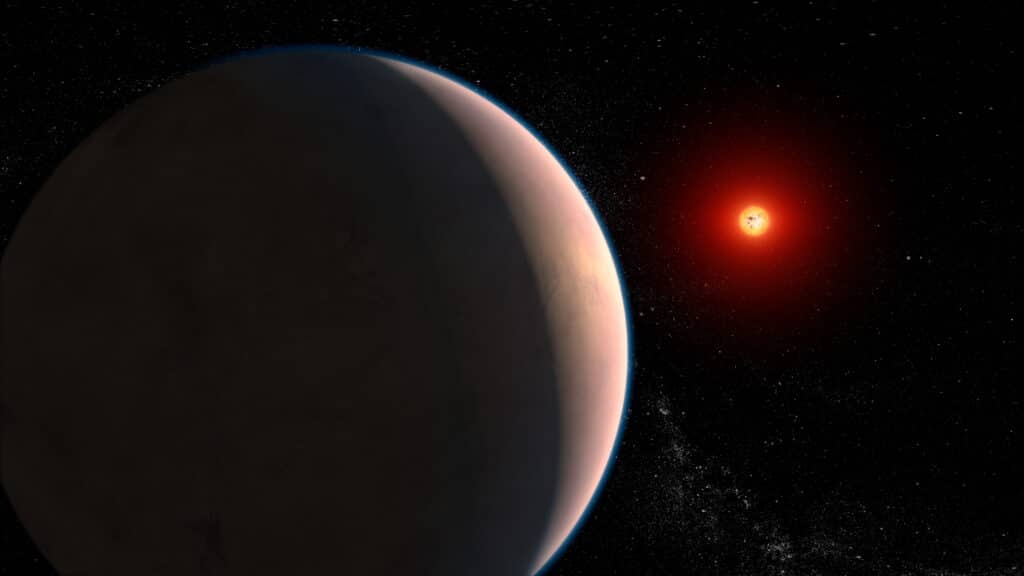
But it’s the MUSE observations that have truly opened a new window onto this intriguing galaxy. By creating a detailed map of the motions and chemical makeup of NGC 4383’s gas, the researchers have uncovered a bipolar outflow – two vast cones of material being ejected from the galaxy’s center.
Stretching over 6,000 parsecs (nearly 20,000 light-years) on either side of the galactic disc, these outflows contain the imprint of NGC 4383’s tumultuous recent history. The gas within them is enriched with heavy elements, a tell-tale sign that it was caught up in the galaxy’s central starburst before being catapulted into intergalactic space.
“Very little is known about the physics of outflows and their properties because outflows are very hard to detect,” says lead study author Dr. Adam Watts, from The University of Western Australia node at ICRAR, in a media release. “The ejected gas is quite rich in heavy elements giving us a unique view of the complex process of mixing between hydrogen and metals in the outflowing gas. In this particular case, we detected oxygen, nitrogen, sulphur and many other chemical elements.”
These outflows, researchers suggest, are driven by the intense energy of NGC 4383’s newborn stars. In the dense central regions of the galaxy, a flurry of star formation is taking place, likely triggered by the infall of fresh hydrogen from that extensive gas disc. As these young, massive stars quickly burn through their fuel and die in spectacular supernova explosions, they launch powerful winds that can sweep up the surrounding interstellar gas and send it streaming out of the galaxy.
By carefully measuring the speed of this ejected material, the researchers estimate that the outflow is carrying away the equivalent of 1.8 solar masses of gas every year — a significant fraction of the gas being consumed by NGC 4383’s star formation. This “mass loading” process could have profound implications for the galaxy’s evolution, as it gradually depletes the reservoir of raw material for new stars.
But NGC 4383’s story is still unfolding. Researchers note that despite its bountiful hydrogen supply, the galaxy’s gas disc shows surprisingly little sign of disturbance. This raises intriguing questions about what triggered the central starburst in the first place. One possibility is a past interaction with a smaller companion galaxy, but more detailed studies will be needed to confirm this scenario.
As the MAUVE survey continues, NGC 4383 will undoubtedly be a key target for follow-up observations. By combining the exquisite detail of MUSE’s optical data with radio maps of molecular gas from the Atacama Large Millimeter/submillimeter Array (ALMA), astronomers hope to build a comprehensive picture of the gas flows into, within, and out of this unusual galaxy.
“We designed MAUVE to investigate how physical processes such as gas outflows help stop star formation in galaxies,” explains study co-author Barbara Catinella, professor and researcher at ICRAR. “NGC 4383 was our first target, as we suspected something very interesting was happening, but the data exceeded all our expectations. We hope that in the future, MAUVE observations reveal the importance of gas outflows in the local universe with exquisite detail.”
Beyond NGC 4383, the survey promises to shed new light on the larger story of galaxy evolution in the Virgo cluster. By studying how galaxies interact with their environment — from the infall of fresh gas to the expulsion of enriched material — researchers hope to piece together the complex processes that shape the cosmic landscapes we see today.
